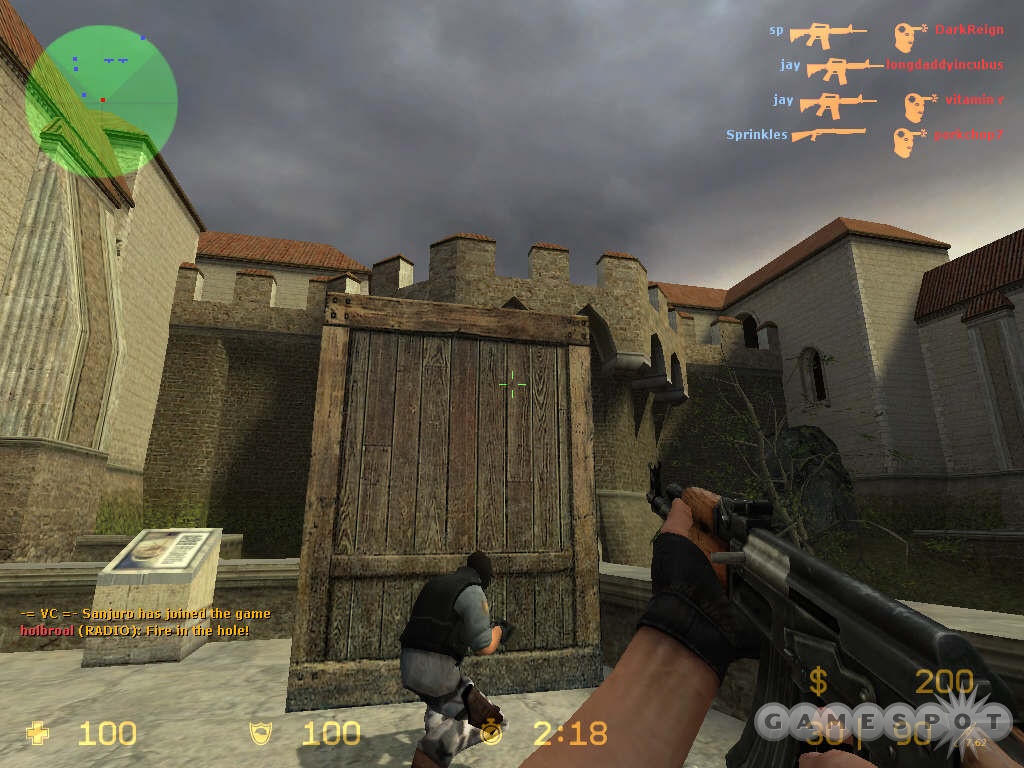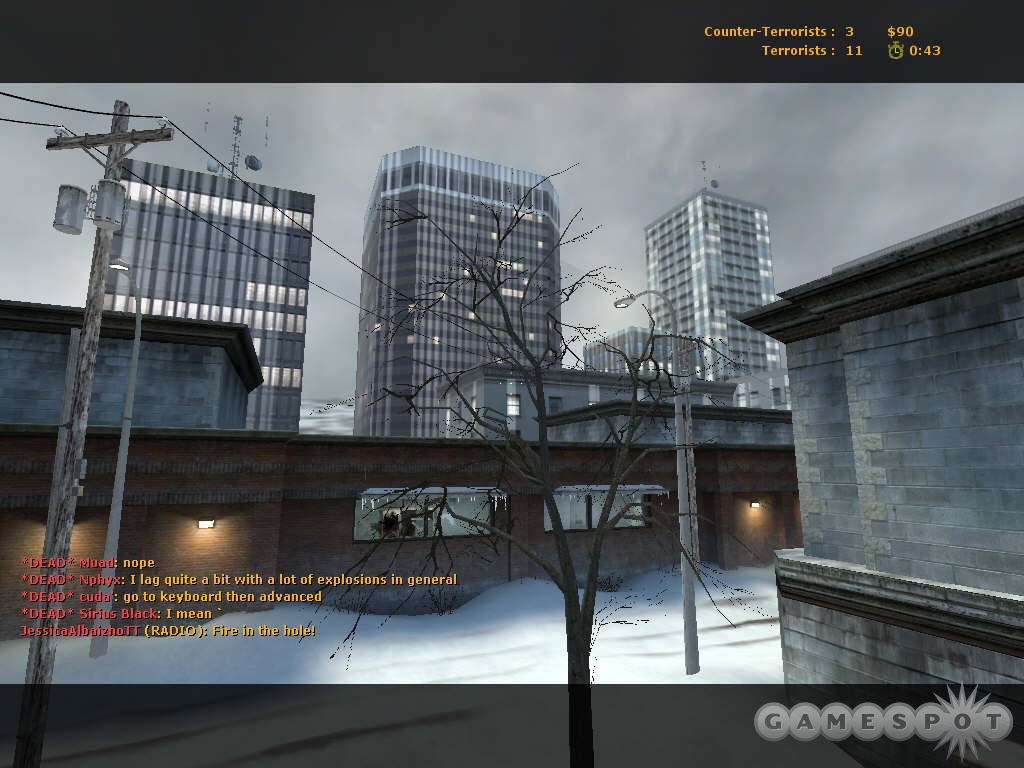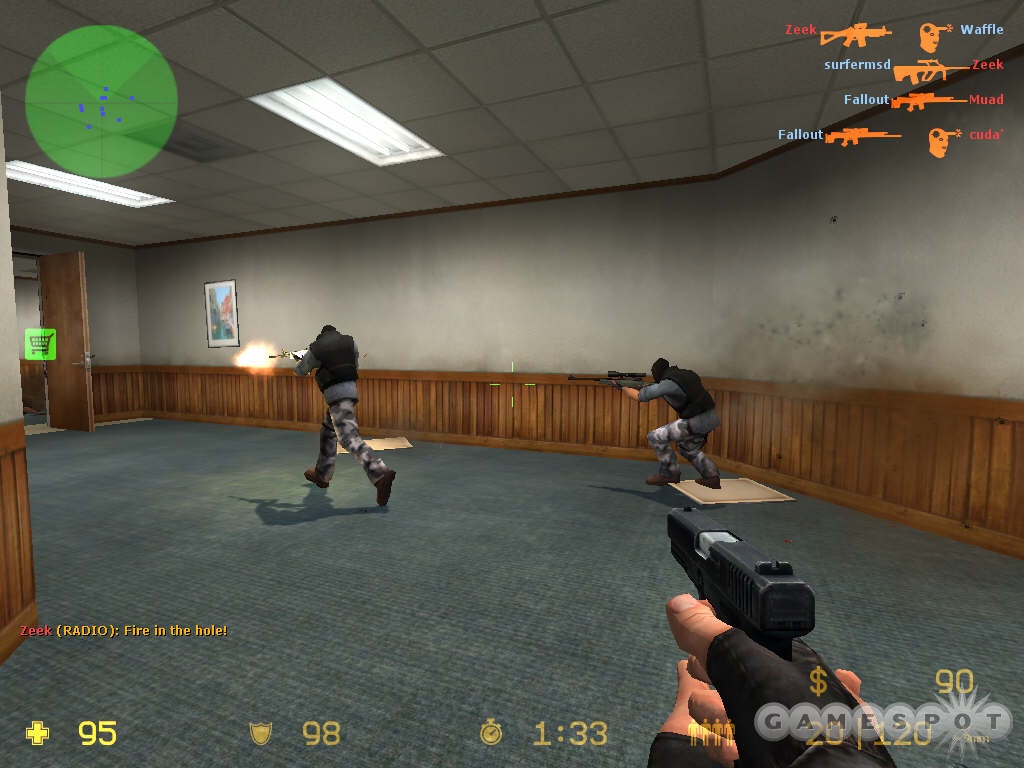Counter-Strike: Source Final Hands-On
We check out the multiplayer component of Half-Life 2, which represents an updated version of one of the most popular online action games ever made.
Valve Software released the final version of Counter-Strike: Source last week to customers who preordered Half-Life 2 on its Steam online content service. This new version of Counter-Strike will serve as the multiplayer component to the long-awaited sequel to Half-Life, once that game is released. For now, CS: Source's release will give anxious shooter fans something to do while they continue to wait for Half-Life 2. Does the conversion to the Source engine significantly change what is widely considered the world's most popular online shooter? The short answer is that if you never liked Counter-Strike before, then the conversion to the Source engine isn't likely to change your opinion of the game, unless your primary quibble was with the graphics. For those who already play and enjoy Counter-Strike, then CS: Source will offer a very welcome face-lift that should extend the life of the venerable game even further.

If you've followed PC gaming at all in the past several years, then chances are you have heard of Counter-Strike and know what it's about. If you've just been paroled from a lengthy jail sentence, here's a quick summary: Counter-Strike is a team-based, online first-person shooter that pits terrorists against counterterrorists (CTs) in a contemporary setting. Generally, a round ends when all the members of one team have been killed, after which all dead players respawn and a new round begins. Each map includes a team-based objective that drives the action. On some maps, the terrorists must attempt to plant a bomb at one of two different bomb sites; the CTs try to keep the targets from being blown up. Other maps require the CTs to rescue hostages that are being guarded by the terrorists. Achieving the map objective is another way a team can win a round without killing off the other team. CS: Source does not include any new game types.
CS: Source comes with nine different maps, but again, none of these will be new to longtime players. It's still extremely fun to see old favorites such as Dust, Office, Aztec, Italy, and Cobble in a brand-new light, thanks to the improved graphics and detail afforded by the Source engine. The most obvious change is the inclusion of more detailed skyboxes that actually render the tops of buildings. On Aztec, for example, you'll actually see the tops of the pyramids that you're fighting in, and if you can find a moment to stop and look around, it feels more like you're actually in the center of a large archaeological site. Other outdoor maps, such as Dust2, also benefit greatly from the improved detail.
The physics engine in CS: Source also plays a role in the game, but not to a huge degree. It's possible, for example, to knock over barrels and send them rolling around. In the office map you'll see file cabinets falling over, as well as computers and office furniture blowing up and splintering as the bullets fly. Some players even try to shoot cabinets over into doorways to block them, although it doesn't seem to affect gameplay that much. The guns that players drop after they die act as true 3D objects in the game. This means you can push a dropped weapon across the room by shooting at it. So, in theory, this makes it possible to kick a dropped AWP sniper rifle over to a teammate or away from an enemy with a well-placed shot. But in practice, the game moves much too quickly for calculated moves such as these to play a real role in pickup matches. There are other subtle touches that affect the way the world looks in CS: Source. Glass breaks a little bit differently, for example. The first shot shatters the pane, but most of the glass still remains in place. Subsequent bullets cause additional shards to cascade downward. It's a nice-looking effect, but it doesn't change the gameplay at all.

Dead bodies now have full rag-doll physics, which is especially noticeable when throwing a grenade onto a pile of corpses. It's particularly satisfying to see an opponent slump against and slide down the wall he was standing next to after you shoot him. Though models sometimes end up in unrealistic, "contortionist" positions after dying, the rag-doll effects in CS: Source give the game a more organic feel than previous CS versions. As with the glass-breaking effects, the rag-doll effects don't affect gameplay, but it does add greatly to the overall atmosphere.
The sound effects in CS: Source, as in all previous versions of Counter-Strike, are excellent. Every gun in the game has a unique timbre, which affects the kind of strategies you use and decisions you make. If you hear your enemies coming at you with MP5s and other submachine guns, you might be more inclined to rush around the corner than if you heard the thunderous report from an AWP or the high chatter of AK-47s. It's also worth noting that bullets ricocheting off different types of materials make different kinds of sounds. Hearing the wood splinter next to your head while you're crouched behind a box is unmistakably different from the pings you hear from shots plinking off of the stone wall above you. It all comes together to create a satisfyingly visceral and realistic atmosphere.
Perhaps the biggest difference between CS: Source and earlier versions of the game is in the grenades. The new effect of flashbang grenades is particularly notable. In past versions, flashbangs would just blind you momentarily, and then your vision would return. In CS: Source you're not only blinded, but also deafened, and as your vision returns you'll get one frame of vision "burned" into the screen. If you move your point of view at this time, you'll see bits of your picture "bleeding" around the monitor as your in-game avatar struggles to regain his normal vision. The upshot of all this is that a well-placed flashbang disorients your enemies for a lot longer, making it much safer to breach a well-defended room or area. Smoke grenades also look much more realistic, with the volumetric effect making it possible to see rough shapes as the smoke dissipates. The effect in gameplay is that you see more players using support grenades as they maneuver through the maps.

Despite the lack of new maps or weapons, Counter-Strike: Source is a nice upgrade to the previous version of the game, Condition Zero. The new graphical polish afforded by the Source engine, as well as the visual tweaks to the maps, should be plenty of reason for current CS players to migrate over, assuming that they don't mind pre-ordering Half-Life 2 over Steam. As of this writing, hundreds of servers are already running the game, which makes it easy to find a match. Assuming Valve continues development on the game, as it has for the past few years, it's a safe bet that Counter-Strike will remain among the most popular and enjoyable online shooters in the world.
Got a news tip or want to contact us directly? Email news@gamespot.com
Join the conversation